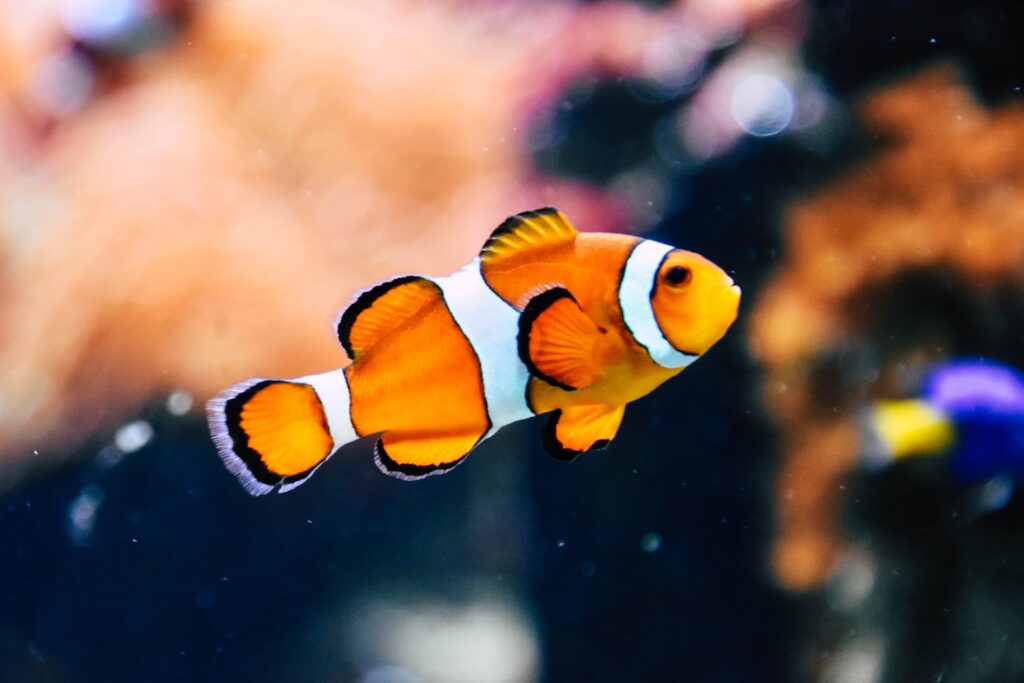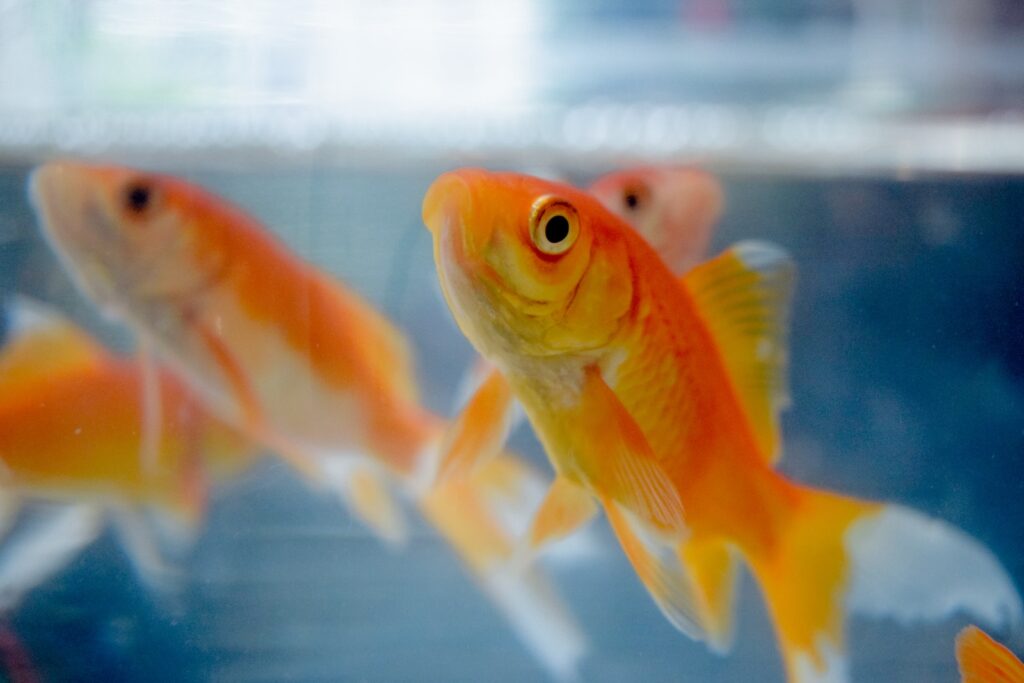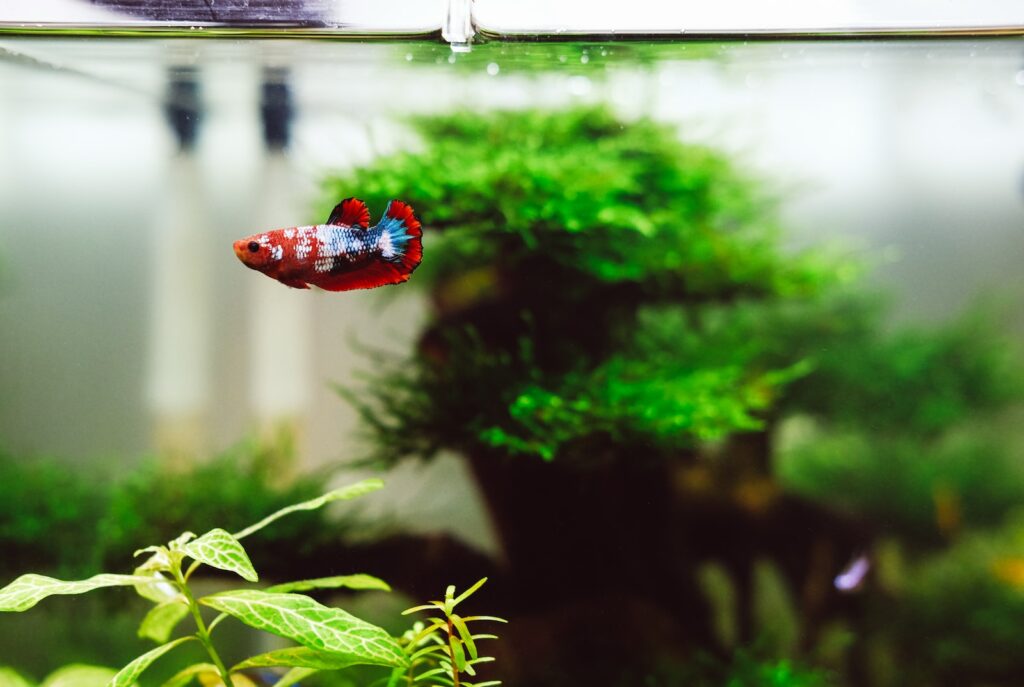When it comes to fish, water isn’t just water. Dive into the deep end with us as we explore the tropical fish world and its H2O demands.
The Science Behind the Water
pH Levels: Not just for your pool
Understanding the importance of pH in an aquarium goes beyond keeping the water clear. The pH level in an aquarium influences every biochemical process that occurs, affecting the health and well-being of the fish. Just like humans need a certain pH level in swimming pools, fish also have their requirements. Most tropical fish thrive best in slightly acidic to neutral pH levels, usually between 6.5-7.5. Any drastic changes in the pH can lead to stress or even fatalities. Regular monitoring ensures a stable environment for your aquatic friends.
Hardness & Softness: Not a Soap Opera
Water hardness is another critical parameter in fish-keeping. Contrary to its name, it’s not about how tactilely hard or soft the water feels. It refers to the concentration of specific minerals in the water – mainly calcium and magnesium. Some fish, like African Cichlids, thrive in harder water while species like Neon Tetras prefer softer surroundings. It’s essential to be aware of your fish’s natural habitat and replicate those conditions in your aquarium. Knowing whether to harden or soften your water can make a significant difference in the health of your fish.
Temperature: The Hot Topic
The temperature is indeed a “hot” topic when discussing tropical fish. While “tropical” may lead many to think of balmy, beachside temperatures, in reality, it’s about consistency more than any particular degree. Most tropical fish flourish in temperatures ranging between 74°F to 80°F. But more than the exact degree, ensuring a consistent temperature is crucial. Fluctuations can lead to stress, illness, or even death. Therefore, investing in a good quality heater and thermometer can prove invaluable for your aquatic pets.
Salt Content: A Pinch or None?
Salt in freshwater aquariums might sound counterintuitive. However, certain tropical fish species benefit from a small addition of salt in their tanks. It can aid in osmoregulation, reduce stress, and even help fight off certain parasites. But, caution is the keyword here. While species like Mollies might appreciate a slight salinity in their environment, others, especially scale-less fish, can be adversely affected. Always do comprehensive research or consult with experts before you even think of salting your tank.
Water Treatment 101
Chlorine: The Unseen Enemy
Most municipal water supplies add chlorine to kill harmful bacteria and pathogens, ensuring the water is safe for human consumption. But for fish, it’s a different story. Chlorine can damage their gills and, over time, prove lethal. So, if you’re using tap water for your aquarium, it’s imperative to treat it first to neutralize the chlorine. There are several dechlorinating agents available in the market that can make tap water fish-safe in no time.
Conditioners: Your Fish’s Best Friend
Apart from just removing chlorine, there are many other elements and compounds in tap water that might not be visible to the naked eye but can be harmful to fish. Water conditioners do the job of neutralizing these harmful substances. They transform harmful chemicals, metals, and compounds into harmless ones, ensuring the water is safe for your fish. They’re the unsung heroes of the aquarium world, and using them is non-negotiable for any responsible fish keeper.
Cycling: Nature’s Filter
The concept of cycling an aquarium revolves around building up beneficial bacteria that help break down fish waste, uneaten food, and other organic debris. These bacteria convert harmful ammonia produced from waste into nitrites and then into less harmful nitrates. It’s a natural filtration process and a vital step when setting up a new tank. Think of these bacteria as the janitors of the aquatic world, silently working to keep the environment clean and habitable.
Aeration: Keep it Bubbly
Fish, like all living organisms, need oxygen to survive. While they extract oxygen from water using their gills, it’s essential to ensure that there’s a steady supply of dissolved oxygen in the tank. Enter aerators. These devices agitate the surface of the water, increasing gas exchange and ensuring a consistent oxygen supply. Plus, the gentle bubbles can also add a mesmerizing aesthetic touch to your tank setup.
Changing Water: Routine is Everything
Frequency: Not the Movie
One of the essential maintenance routines for any aquarium is changing the water. Even with the best filters and equipment, toxins can build up, and essential minerals might deplete over time. Regular water changes help mitigate these issues. For a thriving tank, it’s advised to change 10-15% of the water every week. This consistent refreshment ensures a healthy environment, keeping toxins at bay and replenishing essential minerals. Consider it like giving your fish a refreshing spa day on a regular basis!
Tools: Siphons & Buckets
Equipping yourself with the right tools can make the water-changing process smooth and efficient. A good-quality siphon allows you to vacuum the substrate, removing detritus and waste, while also removing the water. Paired with a dedicated bucket (which should never be used for any other purpose to avoid contamination), these tools will ensure you can perform changes quickly and efficiently. Your fish will definitely appreciate the cleaner environment.
Technique: It’s all in the Wrist
The technique for changing water is straightforward but requires some finesse. Start by gently inserting the siphon into the substrate to vacuum any waste, moving it slowly across the tank’s floor. As you do this, water will also be removed. Once you’ve taken out the required percentage, you can then slowly add the new, treated water. Ensure it’s the same temperature as the tank’s water to avoid temperature shock. And there you have it, a refreshed aquarium in just a few simple steps.
Top-Offs: When Evaporation Strikes
Over time, you might notice the water level in your tank dropping due to evaporation. While it’s tempting to just add more water, it’s essential to remember that as water evaporates, it leaves behind all the dissolved minerals and chemicals. This can lead to increased concentration levels of various substances. So, when you’re topping off, always use treated water to ensure you’re not inadvertently increasing harmful concentrations.
The Role of Filtration
Types: Canister, Sponge, Hang-On
Filtration is the heart of any aquarium, constantly working to keep the water clean and safe. But did you know there are various types of filters to choose from? Canister filters are powerful and sit outside the tank, great for larger aquariums. Sponge filters are air-driven and provide excellent biological filtration, ideal for fry tanks or quarantine setups. Hang-On filters, as the name suggests, hang on the back of the aquarium and are suitable for smaller to medium-sized tanks. Every tank and fish species might have specific filtration needs, so thorough research is vital.
Maintenance: Cleaning Time!
While filters do an excellent job of cleaning the water, they too need regular cleaning. Over time, filters can become clogged with detritus, reducing their efficiency. However, it’s crucial to clean them the right way. Always rinse filter media in the old tank water during water changes. This preserves the beneficial bacteria living on the media. Using tap water can kill these bacteria, setting back the tank’s biological cycle.
Flow Rate: The River vs. The Stream
Flow rate, or how quickly water passes through the filter, is another vital consideration. Some fish, like Hillstream Loaches, love swift currents that replicate their natural fast-flowing stream environments. Others, like Betta fish, prefer calmer waters. It’s essential to adjust your filter’s flow rate to match the preferences of your fish, ensuring they’re comfortable and stress-free.
Media: The Unsung Hero
Filter media are the materials inside a filter that trap debris, house beneficial bacteria, and sometimes even remove specific chemicals from the water. Examples include activated carbon, which can remove impurities and odors, sponges that provide mechanical and biological filtration, and bio-balls designed to maximize the surface area for bacteria. The right media can dramatically enhance a filter’s effectiveness, so choose wisely based on your tank’s needs.
Plants & Decorations: Not Just for Looks
Real vs. Fake: The Eternal Debate
Aquarium plants, whether real or fake, add an aesthetic touch to any tank. But they serve more functions than just looking good. Live plants provide oxygen, absorb carbon dioxide, and offer hiding and breeding spots for fish. They can also absorb some of the nitrates, helping to keep the water cleaner. However, they do require care, proper lighting, and nutrients. On the other hand, artificial plants are virtually maintenance-free and can look as good as real ones. The decision between real and fake plants ultimately boils down to personal preference and the amount of time you’re willing to invest in plant care.
Caves & Hideouts: Everyone Needs Privacy
Just like humans, fish too appreciate a little privacy now and then. Caves, hideouts, and other such decorations offer fish a refuge where they can escape from light or more aggressive tank mates. Such spots can also be essential for species that like to breed in seclusion. When selecting these decorations, ensure they’re made of fish-safe materials and have no sharp edges that could potentially harm your fish.
Substrate: Sand vs. Gravel
The substrate, whether sand or gravel, forms the bed of your aquarium. Beyond aesthetics, different fish species have different substrate preferences. Some fish, like Corydoras catfish, prefer sandy bottoms as they like to sift through the sand in search of food. Others might prefer gravel. It’s also worth noting that certain plants have specific substrate requirements to root and grow effectively. The key is to strike a balance between the needs of your fish, plants, and your personal aesthetic preferences.
Driftwood & Stones: Nature’s Art
Driftwood and stones can be beautiful additions to an aquarium, creating a natural-looking environment. They can also affect water parameters. For instance, some driftwoods can release tannins, slightly acidifying the water and giving it a tea-like hue. This can be beneficial for species that prefer slightly acidic waters. Stones, depending on their type, can sometimes alter hardness and pH too. Always ensure that any driftwood or stone you add has been properly cleaned and is safe for aquarium use.
Understanding the Nitrogen Cycle
The Cycle: Nature’s Way of Balancing
The nitrogen cycle is the essential biological process that converts toxic ammonia, produced from fish waste and uneaten food, into less harmful compounds. Understanding and ensuring this cycle is established in your tank is paramount to the health and longevity of your fish. It typically involves the progression from ammonia to nitrite and finally to nitrate, each stage facilitated by different beneficial bacteria.
Cycling: The Waiting Game
When setting up a new aquarium, it’s vital to cycle the tank before introducing any fish. This process involves establishing colonies of beneficial bacteria that can process ammonia and nitrites. Cycling can take anywhere from a few weeks to a couple of months. During this time, patience is essential. Rushing to add fish to an uncycled tank can lead to their undue stress and even death.
Testing: Knowledge is Power
Regularly testing your aquarium water for ammonia, nitrites, nitrates, pH, and other parameters is essential. Water testing kits are readily available and easy to use. By keeping a close eye on these levels, you can intervene when necessary, ensuring a stable environment for your aquatic pets.
Ammonia & Nitrite: The Silent Killers
Ammonia and nitrite are highly toxic to fish, even at low levels. If your tests detect any amounts of these compounds, it’s a sign that something’s amiss in your tank. It could be due to overfeeding, a deceased fish, or issues with the filter. Immediate water changes and a review of tank management practices are typically recommended in such situations.
Disease & Treatment
Prevention: The Best Medicine
Preventing disease is much easier than treating it. This can be achieved through regular maintenance, not overfeeding, ensuring proper water quality, and quarantining new fish before adding them to your main tank. Observing your fish daily can also help you detect early signs of stress or disease, allowing for timely intervention.
Common Diseases: Recognizing the Signs
Ich, also known as white spot disease, is characterized by tiny white spots on fish. Fin rot shows up as ragged or deteriorating fins. Pop-eye results in one or both eyes protruding. Being familiar with these and other common ailments can aid in early diagnosis and treatment.
Treatment: A Delicate Balance
If your fish become sick, it’s crucial to diagnose the issue correctly and start the appropriate treatment. Over-the-counter medications are available for many common diseases, but it’s essential to follow dosage and treatment duration recommendations. In some cases, a separate quarantine or hospital tank might be necessary to treat affected fish without disrupting the main tank’s balance.
Feeding: More Than Just Flakes
Variety: Spice of Fish Life
While flakes and pellets are staple fish foods, it’s essential to offer a varied diet. Frozen or live foods such as brine shrimp, daphnia, and bloodworms can provide essential nutrients and mimic the natural diet of many species. This variety not only ensures proper nutrition but also keeps fish engaged and stimulated.
Frequency & Amount: Less is More
Overfeeding is a common mistake among aquarium hobbyists. Not only can it lead to obesity and related health issues in fish, but uneaten food can also degrade water quality. It’s generally recommended to feed fish small amounts that they can consume within a few minutes, once or twice a day. Observing your fish’s feeding habits can help you adjust the amount and frequency accordingly.
Specialized Diets: Every Fish is Unique
Some species have specific dietary needs. For instance, herbivorous fish require plant-based foods, while some predatory species might prefer live or frozen prey. Researching and understanding the dietary requirements of each species in your tank is crucial for their health and well-being.
Understanding Aquascaping
The Art of Aquascaping
Designing the layout of your aquarium, or ‘aquascaping,’ is a delightful blend of art and science. It’s more than just placing plants and rocks; it’s about creating a visually pleasing environment that also caters to the natural behaviors and needs of your fish.
Principles: Nature’s Guide
Good aquascaping often follows specific principles that mimic nature. This might mean simulating a riverbed, a densely planted forest underwater, or a mountainous terrain. By observing natural water bodies, you can derive inspiration and replicate those in your aquarium, which is not just pleasing to the eye but also comforting for the fish.
Materials: Choose Wisely
The materials you choose play a pivotal role in your tank’s aesthetics. Natural substrates, driftwood, rocks, and live plants can transform your aquarium’s look. However, ensure that the materials are safe for the tank’s inhabitants. For example, some rocks might alter the water’s pH, and driftwood might release tannins that soften and tint the water.
Maintenance: Beauty Requires Effort
While a well-aquascaped tank is a sight to behold, it also demands regular maintenance. This includes trimming plants, cleaning substrates, and ensuring that the decorations don’t become algae’s breeding ground. A little effort goes a long way in keeping your aquarium looking pristine.
Importance of Compatibility
Species Interactions: Friends or Foes?
While it’s tempting to house different species together, it’s crucial to understand their compatibility. Some fish are territorial, while others might have specific dietary needs that could endanger other tank mates. Always research beforehand to ensure harmonious tank life.
Plant & Fish Synergy: A Mutual Relationship
Plants can benefit fish by offering hiding spots, reducing stress, and oxygenating the water. Conversely, fish provide plants with essential nutrients through their waste. However, some fish might nibble on certain plants. Thus, understanding this balance is crucial when choosing plant species for your tank.
Water Conditions: One Size Doesn’t Fit All
Different species have varying water requirements in terms of pH, hardness, and temperature. While some discrepancies can be accommodated, extreme mismatches can stress or endanger your fish. It’s always best to house species with similar water condition preferences together.
Conclusion
Creating a thriving, harmonious aquatic environment requires research, patience, and a touch of creativity. From understanding the intricacies of water conditions to designing a beautiful aquascape, every aspect contributes to the well-being and happiness of your aquatic friends. Embark on this journey with dedication, and the vibrant, tranquil world of your aquarium will endlessly fascinate and reward you.
FAQs
- How often should I feed my fish?
- Typically, once or twice a day in small amounts that they can consume within a few minutes is ideal. However, this might vary depending on the species and their specific needs.
- How can I control algae growth?
- Regular maintenance, reducing light exposure, and ensuring that the water conditions are optimal can help. Additionally, some fish and snails feed on algae and can be natural cleaners for your tank.
- Why is my fish hiding all the time?
- Several factors can cause this behavior: stress, sickness, or insufficient hiding spots in the tank. It’s essential to monitor your fish and provide a comfortable environment for them.
- Is direct sunlight harmful to my aquarium?
- Direct sunlight can cause excessive algae growth and fluctuating temperatures. It’s best to place your aquarium in a location where it receives ambient light but not direct sun exposure.
- Can I add fresh plants to my tank directly?
- It’s recommended to quarantine and clean new plants before adding them to prevent potential pests or diseases from entering your main tank.



